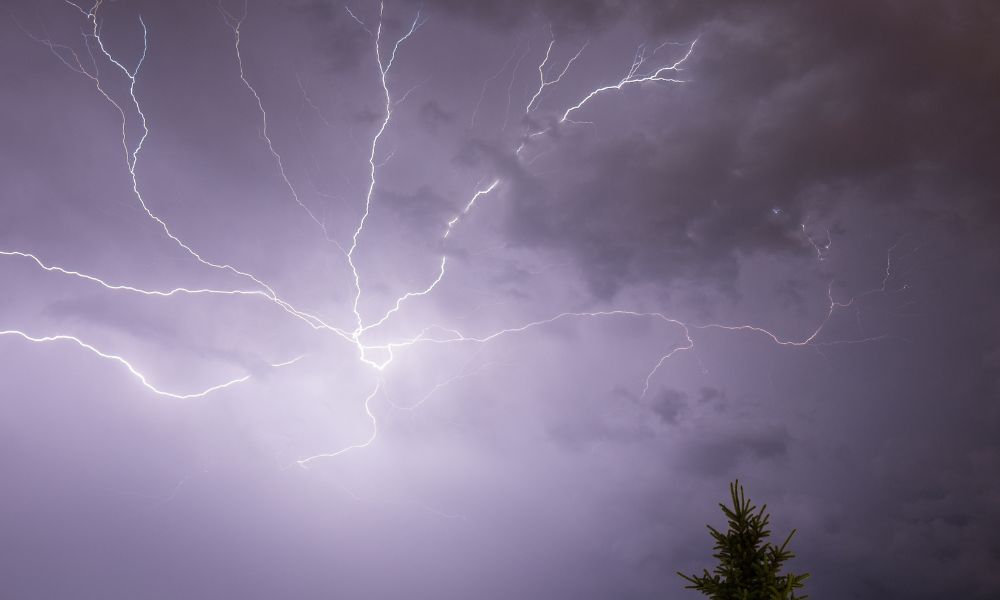Severe Weather 101: The Different Types of Lightning

Lightning comes in many variations. Differences in temperature, humidity levels, and atmospheric pressure affect the physical properties of lightning bolts. Understanding the different types of lightning can provide insight into meteorology studies, improve safety protocols, and enhance predictions of storm severity. Familiarizing yourself with the different types of lightning is an essential component of severe weather 101. So what are the many possible forms of lightning?
Intracloud Lightning
Intracloud lightning, often called sheet or IC lightning, is the most common type of lightning. IC lightning occurs mainly within the cloud between positively charged and negatively charged areas. Therefore, this form of lightning is hidden inside the cloud, appearing as a bright flash that illuminates the sky without a visible bolt. The electrical discharge during intracloud lightning travels through cloud regions with different charge densities, creating a network of bright channels.
Intracloud lightning is associated with large-scale storm systems; it’s commonly observed in severe thunderstorms, supercell storms, and even hurricanes.
Cloud-to-Ground Lightning
Cloud-to-ground lightning is a dramatic, hazardous lightning form. This phenomenon occurs when an electrical discharge generated within the cloud descends and strikes the earth’s surface. Cloud-to-ground lightning is characterized by its vivid, branching structure, which can often span several miles in length.
Less common than intracloud lightning, cloud-to-ground lightning still poses a significant risk due to its direct interaction with the earth’s surface, making it a potential cause of wildfires, power outages, and lightning-strike injuries.
Cloud-to-Cloud Lightning
Cloud-to-cloud lightning occurs between two or more separate storm clouds; the electrical discharge transmits from one cloud to another. This lightning form often manifests as a series of bright flashes moving across the sky, spanning vast distances. It typically emerges during severe weather conditions when multiple storm cells are in close proximity, creating an intense electrical field between them.
Cloud-to-cloud lightning presents several risk factors. It doesn’t strike the ground directly, but it can induce secondary currents in the ground below, which can potentially interfere with electronic systems and infrastructure.
Ribbon Lightning
Ribbon lightning is a phenomenon that occurs when a strong wind blows the ionized path of a cloud-to-ground lightning bolt sideways, causing subsequent strikes to follow slightly displaced paths. As a result, a series of parallel lightning strikes forms, giving the appearance of a ribbon in the sky.
Since the wind can displace the strikes over a larger area, the likelihood of multiple points of contact with the ground increases, escalating the risk of wildfires, damage to infrastructure, and human contact.
Each of the different types of lightning comes with its own hazards, from raging weather conditions to lightning-strike damage and injuries. The TALOS lightning detector for spas offers advanced detection of any form of lightning, providing real-time alerts to allow spa-goers to respond and react accordingly. With TALOS lightning detectors and an enhanced understanding of lightning forms, you can improve your severe weather 101 and remain prepared.
Request a Quote
"*" indicates required fields
At TALOS, Engineering Drives Best-in-Class Quality
Our mission is to provide families with quality products that promote safety and awareness while enjoying leisure activities together. Our patent pending products feature the same technology used in expensive weather stations, but at a fraction of the price.
SHOP NOW
Don’t just take our
word for it.
At TALOS®️, we're developing that technology into new innovative concepts designed for enhancing consumer lifestyles.